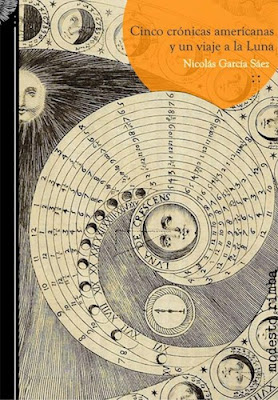Catrina the skull laughs and her happy death laughter booms down the streets. The dawn is warm and serene, here, in the south of the Aztec territory. Two neighbors open the door of their homes almost in unison and come out with their brooms to sweep the dirt which has invaded the centenarian stone. In front of them, a man in a disheveled grey suit, his nose dyed a pompous shade of red, reeking of mescal, walks aimlessly, forming rhombuses, disappears after attempting to converse with the corner lamp post. One of the ladies smiles timidly, the other makes a grimace of disapproval, the grimace of one who around that time always sees the same spectacle, the one provided by a hangover after an intense night with a full moon and complicit with the ethyl vapors that have had conversations with the festive souls from the afterlife.
It is because yesterday the Day of the Dead was celebrated in the whole of Mexico, a curious way of celebrating the deceased with a parade of giant figures, with flowers, incense and little skulls made of sugar which will be deposited by the bereaved on the altars, offerings to their loved ones who are no longer with them. This is not new, of course, they are festivities that have been held in early November since pre-Columbian times. The novelty is what tourists and travelers feel when seeing entire populations laugh and dance with one of the issues most feared by practically the whole of humanity. It is not strange to see among these streets splattered with walls decked in red, pink, green, walls screeching in violets and blues, others whispering pastel hues or immaculate white inside and outside solid, exquisite, constructions, their perspectives look perfect towards the vanishing point which joins them in the horizon, with its checkerboard layout, withstanding several centuries and prowling among ancient temples covered in gold, witnesses of suns, of so many shadows…it is not strange, I was saying, that at one point some individuals, under the guise of an inspecting commission, had come to take pleasure in these lands and had declared it World Heritage.
Ríe
la calavera Catrina y retumba por las calles su risa de muerte feliz. Amanece
tibio y sereno, aquí, en el sur de la tierra azteca. Dos vecinas abren la
puerta de sus hogares casi al unísono y salen con sus
escobas a sacudir
la mugre que
ha invadido a
la piedra centenaria. Frente a ellas un hombre de traje
gris despilfarrado, la nariz teñida con un rojo rimbombante, el tufo a mezcal,
camina sin rumbo, haciendo
rombos, desaparece luego
de intentar una
conversación con el
farol de la
esquina. Una de
las damas sonríe
con timidez, la
otra despliega una
mueca de desaprobación, la mueca de la que por esas fechas contempla
siempre el mismo espectáculo, aquel que provee la resaca de una noche intensa
de luna llena y cómplice con los vapores etílicos que han dialogado con almas
festivas provenientes del más allá.
Y es que ayer se festejó en todo México el Día de los Muertos, curiosa manera de celebrar a los difuntos con desfiles de muñecos gigantescos de tela, con flores, inciensos y calaveritas de azúcar que serán depositadas por los deudos en los altares, ofrendas a los seres queridos que ya no están. Esto no es nuevo, por supuesto, son fiestas que se vienen realizando, a principios de noviembre, desde la época precolombina. Novedoso es lo que sienten los turistas y los viajeros al ver cómo poblaciones enteras ríen y bailan con uno de los asuntos más temidos por casi toda la humanidad. No es raro que entre estas calles salpicadas con muros vestidos de rojo, rosa, verde, de paredes que chillan violetas y azules, de otras que susurran tonalidades pasteles o blancos inmaculados dentro y fuera de construcciones sólidas, exquisitas, cuyas perspectivas lucen perfectas hacia el punto de fuga que las une en el horizonte, con su trazado en damero, cargando varios siglos y merodeando entre templos antiquísimos cubiertos de oro, testigos de soles, de tantas sombras...no es raro, decía, que en algún momento algunos individuos, disfrazados como una comisión de inspectores, hayan venido a complacerse en estas tierras y la hayan declarado Patrimonio de la Humanidad.
Traducción al inglés (inédita): Cecilia
Cartwright
Crónica(fragmento)*: Nicolás García Sáez
*De su libro ¨Cinco crónicas americanas y un
viaje a la Luna
Tapa: M.Rimba / S. Camileri
Especial para Los Verdes Paralelos y Los
Verdes Platónicos
